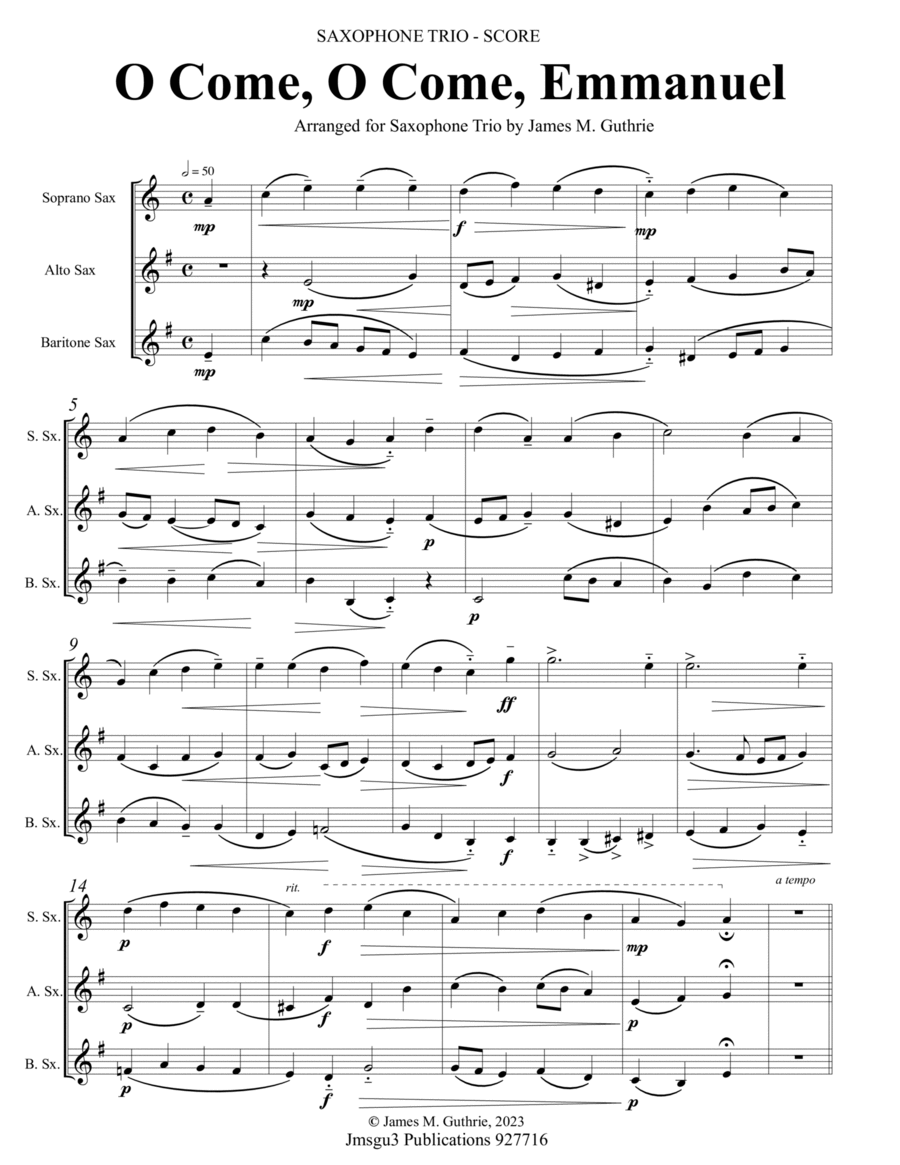Saxophone Trio,Woodwind Ensemble Alto Saxophone,Baritone Saxophone,Soprano Saxophone - Level 3 - Digital Download SKU: A0.1342264 Composed by Traditional. Arranged by James M. Guthrie. Chamber,Christian,Christmas,Holiday,Traditional. 3 pages. Jmsgu3 #927716. Published by jmsgu3 (A0.1342264). Veni, Veni, Emmanuel, also known as O Come, O Come, Emmanuel, is a Christian hymn for Advent. It has ancient origins, as the melody synthesizes the great, ancient O Antiphons sung for Vespers during Advent. The familiar tune, Veni Emmanuel, was first linked with this hymn in 1851, when Thomas Helmore published it in the Hymnal Noted, paired with an early revision of Neale's English translation. While the Veni Emmanuel tune predominates in the English-speaking world, several others have been closely associated with the hymn.O Come, O Come, Emmanuel has been used in popular culture as a significant and enduring hymn, particularly during Advent and Christmas. Its universal themes of hope, longing, and the anticipation of the arrival of Jesus Christ have resonated with listeners of different generations, evoking strong emotions and connecting them to the deeper meaning of Christmas and Advent. The song's profound impact on listeners, touching hearts and stirring emotions, has contributed to its enduring popularity. Various artists have sung it, featuring it in numerous Christmas albums and performances, further solidifying its place in popular culture. Therefore, O Come, O Come, Emmanuel holds a special significance in popular culture due to its timeless message and emotional impact on listeners.
